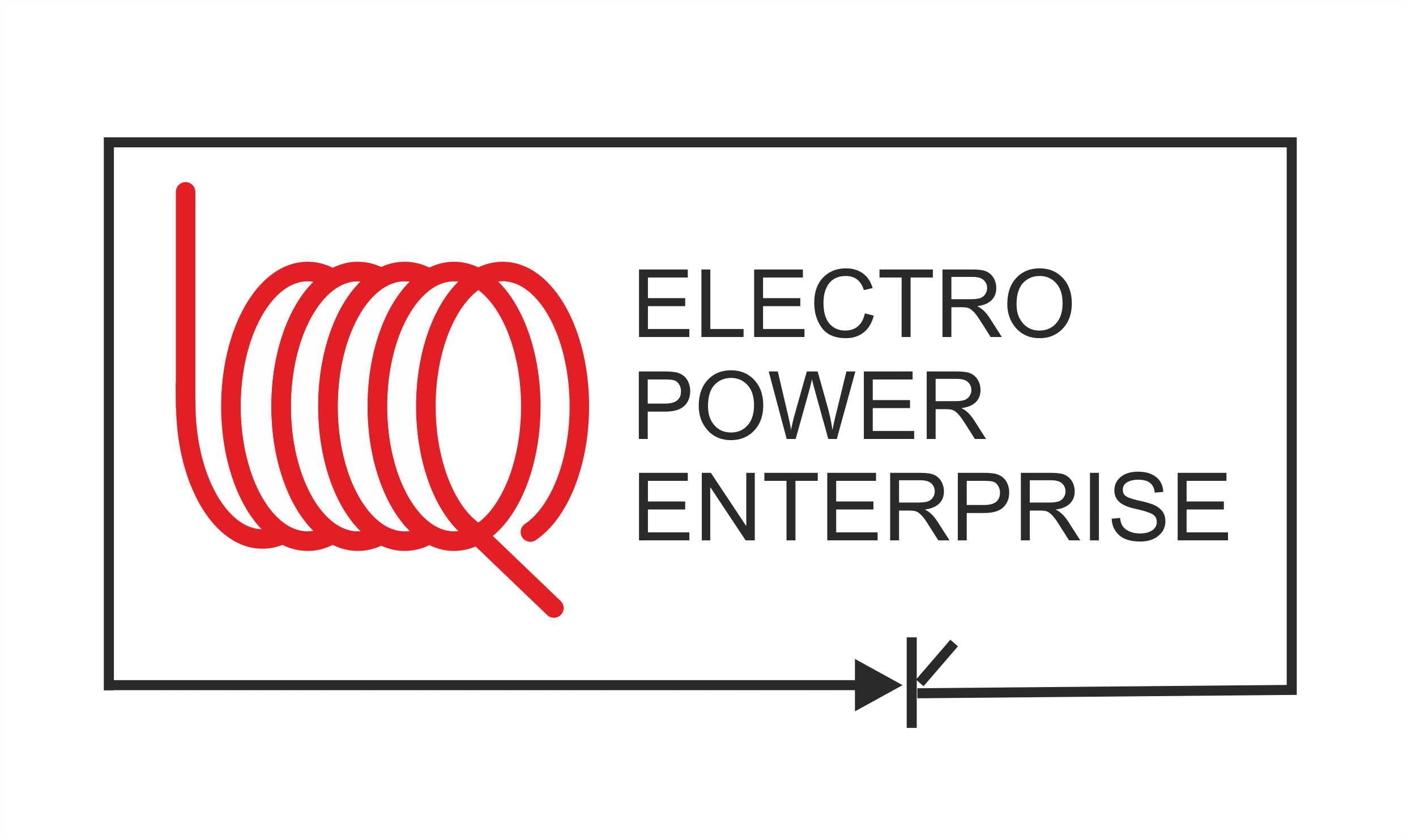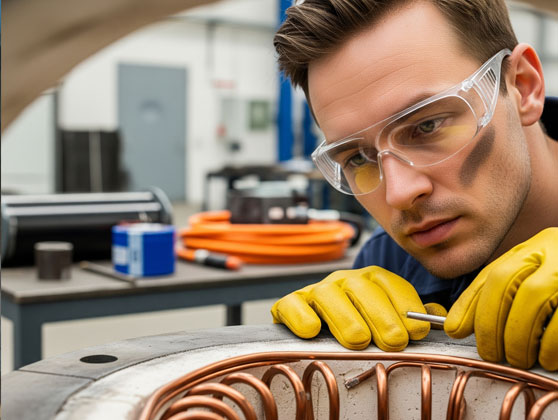Don’t Wait for a Breakdown: Your Essential Induction Furnace Spare Parts Repair & Maintenance Checklist
In the demanding world of foundries and metal production, an induction furnace is a workhorse, running continuously under extreme conditions. While these machines are built tough, like any complex industrial equipment, they rely on a network of critical spare parts. Waiting for a component to fail before addressing it is a recipe for costly downtime, lost production, and even safety hazards.
A proactive approach, armed with a comprehensive spare parts repair and maintenance checklist, is the key to maximizing uptime, ensuring consistent melt quality, and extending the lifespan of your valuable asset.
This blog post outlines common spare parts across key systems of an induction furnace and provides a checklist for inspection, repair, and planned maintenance.
The Golden Rule: Safety First!
Always ensure the furnace is completely shut down, de-energized, locked out, and tagged out (LOTO) before commencing any inspection or maintenance work. Follow all manufacturer safety guidelines.
1. The Heart of the Melt: Induction Coil & Refractory System
This is where the magic happens, but it’s also exposed to immense heat and stress.
- Spare Parts: Copper coil sections, refractory lining materials (patching, ramming mass, castables), coil grout, coil insulation (micas, ceramic blankets).
- Repairing/Maintenance Checklist:
- Coil Integrity:
- Visual Inspection: Look for signs of cracking, bulging, or dislodgement of the coil grout/cement. Inspect for any copper discoloration (indicating overheating) or signs of arcing.
- Water Leaks: Check thoroughly for any signs of water leaks from the coil tubes (even tiny drips can cause major issues).
- Insulation Condition: Verify the integrity of the coil insulation between turns and between the coil and the furnace shell. Look for burned spots or deterioration.
- Terminal Connections: Inspect coil terminals for looseness, corrosion, or signs of overheating.
- Refractory Lining:
- Lining Thickness: Monitor remaining refractory thickness using a sounding rod or visual inspection.
- Cracks & Erosion: Look for cracks, spalling, or excessive erosion, particularly in the slag line, pour spout, and crucible bottom.
- Patching/Repair: Assess areas requiring patching or relining. Ensure proper drying and sintering procedures after any repair.
- Crucible Integrity (for crucible-type furnaces): Inspect the crucible for cracks, wear, or thinning.
- Coil Integrity:
2. The Brains & Brawn: Power Supply Components
The power supply converts grid electricity into the high-frequency power needed for melting.
- Spare Parts: Capacitors (power factor correction, resonant circuit), SCRs (Silicon Controlled Rectifiers) or IGBTs (Insulated Gate Bipolar Transistors), diodes, transformers (isolation, matching), current transformers (CTs), potential transformers (PTs), fuses, busbars, snubber circuits.
- Repairing/Maintenance Checklist:
- Capacitor Banks:
- Visual Inspection: Check for bulging, leaking oil, or discolored terminals – clear signs of failure.
- Cleanliness: Ensure capacitors are clean and free of dust, which can impair cooling.
- Connections: Verify all connections are tight and free of corrosion.
- Semiconductor Devices (SCRs/IGBTs/Diodes):
- Heatsink Cleanliness: Ensure heatsinks are free of dust and debris to allow efficient heat dissipation.
- Thermal Paste: Verify thermal paste integrity if devices have been removed or replaced.
- Connections: Inspect gate drive connections and power connections for tightness.
- Transformers & Busbars:
- Visual Inspection: Look for discoloration, arcing marks, or signs of overheating on windings or laminations.
- Connections: Check busbar connections for tightness and cleanliness.
- Fuses:
- Rating: Ensure correct fuse ratings are installed.
- Integrity: Visually inspect for blown fuses (though often non-visible, testing might be needed).
- Capacitor Banks:
3. The Lifeline: Water Cooling System
Efficient cooling is paramount to prevent overheating and damage to critical components.
- Spare Parts: Water hoses (flexible and rigid), hose clamps, water filters, strainers, heat exchanger coils, cooling tower fill, water pumps, flow switches, pressure switches, temperature sensors, solenoid valves.
- Repairing/Maintenance Checklist:
- Hoses & Connections:
- Leaks: Inspect all water hoses and connections for leaks, cracks, bulges, or signs of wear. Replace any suspect hoses.
- Clamps: Ensure all clamps are secure and free from corrosion.
- Water Quality:
- Conductivity/pH: Regularly test water conductivity and pH levels. High conductivity indicates contaminants that can cause arcing and corrosion. Maintain within manufacturer’s specified range.
- Filters/Strainers: Clean or replace water filters and strainers regularly to prevent blockages.
- Pumps:
- Operation: Check for unusual noises, vibrations, or reduced flow from the cooling water pumps.
- Seals: Inspect for leaks around pump seals.
- Heat Exchanger/Cooling Tower:
- Fins/Fill: Clean heat exchanger fins or cooling tower fill to ensure efficient heat transfer. Remove scale or algae build-up.
- Fan Operation: Verify cooling tower fans are operating correctly and efficiently.
- Flow/Pressure/Temperature Switches:
- Functionality: Test these safety interlocks regularly to ensure they trip at the correct parameters.
- Calibration: If possible, verify calibration of sensors.
- Hoses & Connections:
4. The Movement Maestro: Hydraulic System (if applicable)
For tilting furnaces, the hydraulic system is key to pouring and maintenance.
- Spare Parts: Hydraulic cylinders, hoses, pumps, filters, directional control valves, pressure relief valves, hydraulic oil.
- Repairing/Maintenance Checklist:
- Leaks: Inspect all hydraulic hoses, fittings, and cylinders for leaks.
- Oil Level & Quality: Check hydraulic oil level and condition. Look for discoloration or contamination. Change oil and filters as per schedule.
- Pump Operation: Listen for unusual noises from the hydraulic pump.
- Cylinder Function: Observe smooth operation of tilting cylinders; check for shuddering or inconsistent movement.
- Valve Integrity: Check for external leaks or sticking in hydraulic valves.
5. The Outer Shell & Support: Furnace Body & Mechanics
The physical structure that houses the melting process.
- Spare Parts: Furnace lid/cover, lid refractory, support structures, pouring spout inserts, trunnion bearings (for tilting furnaces).
- Repairing/Maintenance Checklist:
- Structural Integrity:
- Cracks/Deformation: Inspect the furnace body, frame, and support structures for cracks, deformation, or signs of stress.
- Mounting Bolts: Ensure all mounting bolts are tight.
- Lid/Cover:
- Refractory: Inspect lid refractory for cracks or wear.
- Mechanism: Check the lid lifting/swinging mechanism for smooth operation and proper lubrication.
- Tilting Mechanism (if applicable):
- Bearings: Inspect trunnion bearings for wear or excessive play. Ensure proper lubrication.
- Structural Integrity:
Beyond the Checklist: Proactive Strategies
- Maintain a Critical Spares Inventory: Don’t just check; ensure you have critical spare parts readily available. Lead times for specialized components can be lengthy.
- Establish a PM Schedule: Implement a strict Preventative Maintenance (PM) schedule based on manufacturer recommendations and operational hours.
- Train Your Team: Ensure your maintenance personnel are well-trained in induction furnace specific troubleshooting and repair.
- Keep Records: Document all inspections, repairs, and part replacements. This data is invaluable for identifying recurring issues and optimizing your maintenance strategy.
- Consider a Service Contract: For highly critical operations, consider a service contract with the furnace manufacturer or a specialized service provider.
By diligently following a comprehensive checklist and adopting a proactive maintenance philosophy, you can significantly reduce unscheduled downtime, extend the life of your induction furnace, and ensure a more reliable and profitable melting operation.

Rajesh Baraiya, Founder of Electro Power Enterprise, is passionate about making induction furnaces run more efficiently and last longer. Backed by three decades of hands-on experience, He provides practical insights into Induction furnace spare parts, enabling industries to achieve higher efficiency and longer furnace life.

